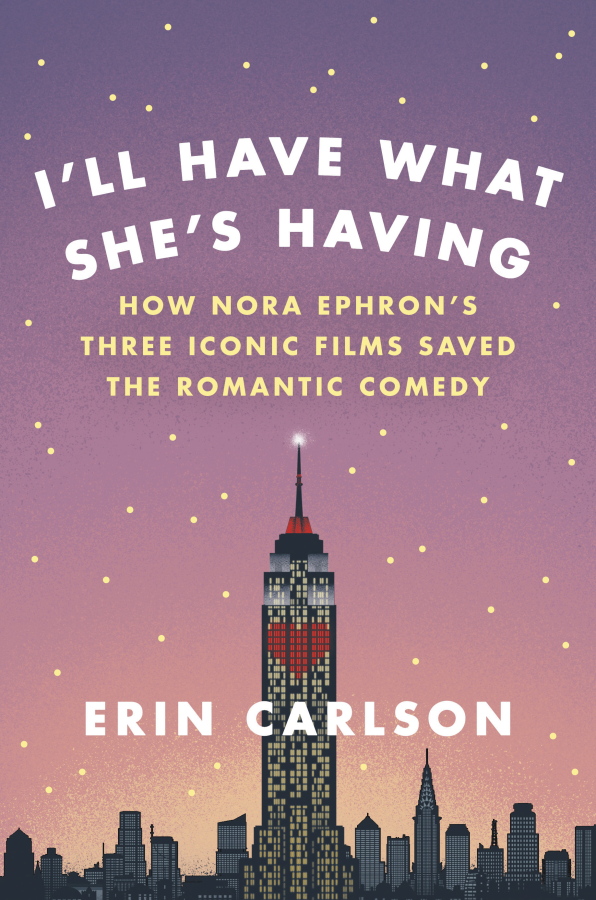Did writer and director Nora Ephron really save the romantic comedy? Are the three movies detailed here — “When Harry Met Sally …,” “Sleepless in Seattle” and “You’ve Got Mail” — really iconic?
Are we really going to nitpick about this?
Let’s not, especially if you are a fan of Ephron, her films or romantic comedies in general. Reading author Erin Carlson’s book “I’ll Have What She’s Having” is as satisfying as finding out what goes into a favorite dessert — and then having another slice.
That’s what romantic comedies are — guilty delights that are good but not necessarily good for you. Like a treat that takes your mind off eating your vegetables, a romantic comedy allows you 90 minutes or so to pretend that finding the right mate will actually work out in the end.
A journalist and author turned filmmaker, Ephron took the eat-your-vegetables approach with her first two screenplays, “Silkwood” (1983) with Meryl Streep and “Heartburn” (1986) with Streep and Jack Nicholson. Most moviegoers weren’t that keen on well-made dramas about a possibly murdered nuclear plant worker or a woman married to a philanderer.
Ephron’s mother was a screenwriter herself back in the day, and she often advised her daughter to take a sad story and “turn it into a funny story.” Ephron took that advice at just the right time. In the mid-1980s, according to Carlson, the rom-com was ready to move out of the ups and downs and unhappy endings.
A story about friends who break up because they’ve become lovers, “When Harry Met Sally …” (1989) turned into a happy one by ending with Harry and Sally reunited. Directed by Rob Reiner and starring Billy Crystal and Meg Ryan, Ephron’s first rom-com effort was a surprise hit.
Ephron both wrote and directed “Sleepless in Seattle” (1993), a funnier if more fantastical story with an even happier ending. Ryan was back, too, this time with Tom Hanks and a special appearance by the Empire State Building. All were rewarded with an even fatter box office. Good judgment prevailed and a “Sleepless” sequel wasn’t seriously pursued, but “You’ve Got Mail” (1998) was the closest thing to box-office heaven, reuniting Ephron, Ryan and Hanks with moviegoers’ money.
Carlson offers the deepest of dives into behind-the-scenes movie machinations to support her view that Ephron and those with whom she worked redefined the romantic comedy, making it “wry, knowing and urbane but with an unabashed idealistic streak as well.” Recollections from Ryan, Hanks, Reiner and scores of colleagues, friends and family of Ephron — she died in 2012 at age 71 — help Carlson provide a witty, spirited take on cinematic dream teams at work.
For inspiration Ephron tapped her own experiences and likes and dislikes, and listened and observed like a good journalist. Another bit of advice from her mom: “Everything is copy.”
Case in point: The best-remembered scene in “When Harry Met Sally …” takes place when Sally proves to Harry that women can fake an orgasm, mimicking one in a restaurant. Producer Andrew Scheinman’s girlfriend’s sister suggested the subject, Ephron and Reiner endorsed it, and it was Ryan’s idea for Sally to act it out. Crystal suggested the location and came up with the topper: An older Jewish woman says, “I’ll have what she’s having.” Keeping it all in the family, Reiner hired his mother to deliver the line.
Ephron’s own mom might have put it this way: It takes a village to make a movie.



